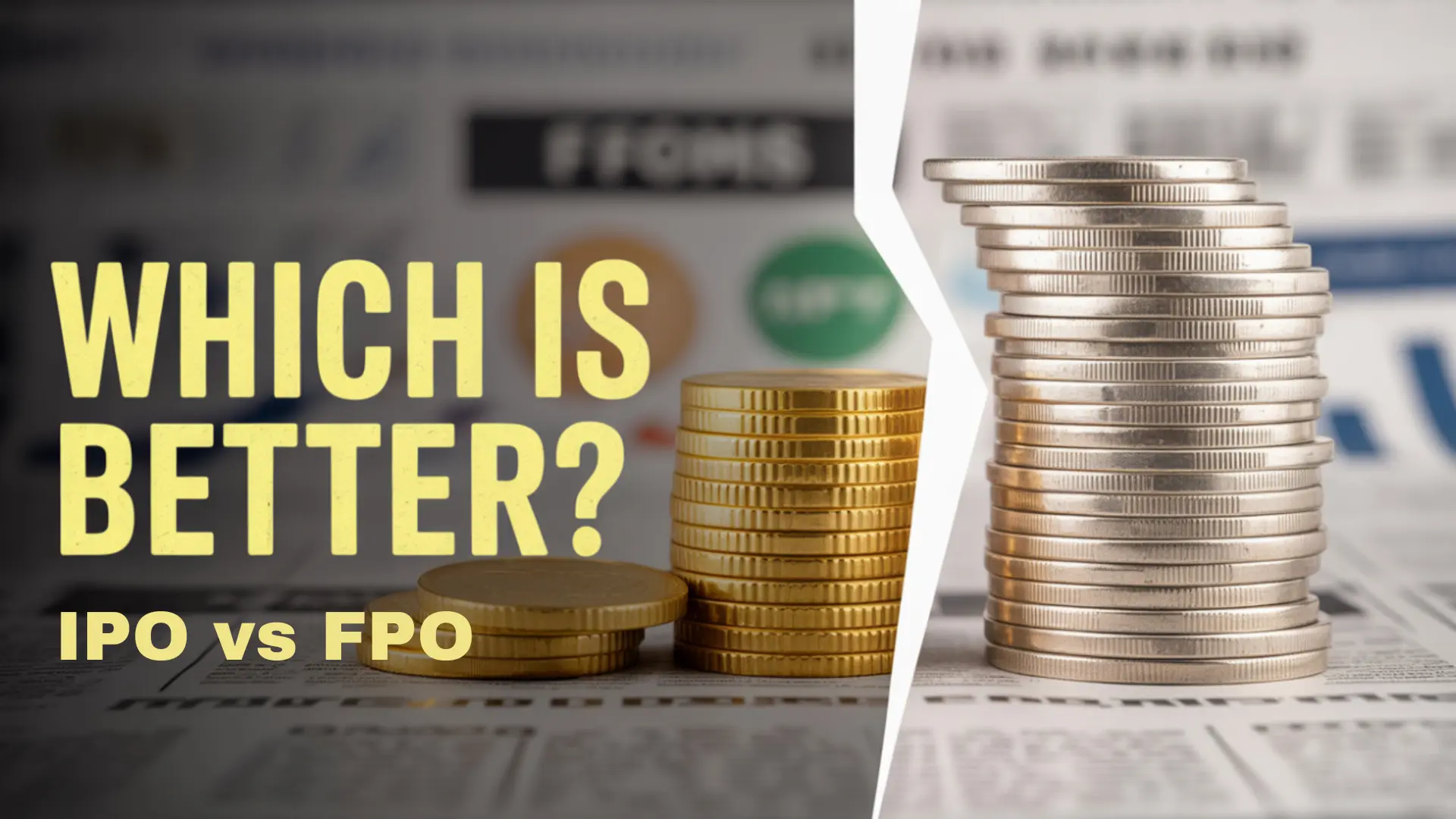📚 Table of Contents
- 🧠 Introduction
- 🚀 What is an IPO?
- 🔄 What is an FPO?
- ✅ Similarities Between IPO and FPO
- 📌 Types of IPOs
- 📌 Types of FPOs
- 🔍 IPO vs FPO – Key Differences
- 💡 Why Do Companies Issue FPO?
- 🏢 Real-World Examples of IPO and FPO
- 📈 Final Thoughts
- ❓ Frequently Asked Questions (FAQs)
🧠 Introduction
IPO vs FPO : When a company wants to raise funds from the public, it typically does so through IPO (Initial Public Offering) or FPO (Follow-on Public Offering). These are two popular fundraising methods used in the stock market, but they serve different purposes and occur at different stages of a company's lifecycle.
If you're planning to invest in the share market, understanding the difference between IPO and FPO is essential. In this guide, we explain their meaning, types, objectives, and key differences across various factors such as pricing, ownership dilution, and risk.
🚀 What is an IPO?
IPO, or Initial Public Offering, refers to the first time a private company offers its shares to the public and becomes listed on a stock exchange.
After launching an IPO, the company transitions from a privately held entity to a publicly traded one. In India, IPOs are typically listed on NSE (National Stock Exchange) or BSE (Bombay Stock Exchange). For smaller enterprises, the BSE SME and NSE Emerge platforms are used.
The IPO process takes place in the primary market, and once listed, shares can be traded freely in the secondary market.
🔄 What is an FPO?
FPO, or Follow-on Public Offer, is when a company that’s already listed on the stock exchange offers additional shares to the public.
This can be done either by issuing new shares (dilutive FPO) or by existing promoters selling their holdings (non-dilutive FPO). FPOs are typically issued to raise more funds for business expansion, debt repayment, or other corporate purposes.
✅ Similarities Between IPO and FPO
• Both are methods of equity financing where a company sells ownership (shares) to the public.
• Minimum market capitalization of Rs 25 crore is needed to issue either IPO or FPO.
• The listing happens on leading stock exchanges like NSE or BSE.
• A minimum of 35% shares is reserved for retail investors in both IPO and FPO.
• Investors can apply via UPI or ASBA-enabled net banking.
• Both offerings give investors a stake in the company.
📌 Types of IPOs
1. Fixed Price Issue
In this type, the company sets a fixed price for all its shares.
Example: If the IPO price is ₹50 per share, all investors apply at that price.
2. Book Building Issue
Here, the company provides a price band (e.g., ₹50–₹60). Investors bid within this range, and the final price is determined after reviewing the demand.
Tip: Bidding at the cut-off price increases the chance of allotment.
📌 Types of FPOs
1. Dilutive FPO
The company issues new shares, increasing the total number of outstanding shares. This may dilute earnings per share (EPS).
2. Non-Dilutive FPO
Here, existing shareholders/promoters sell their personal shares. The total share count remains the same, and ownership is transferred, not increased.

🔍 IPO vs FPO – Key Differences
| Feature | IPO | FPO |
|---|---|---|
| Definition | First public issue | Additional shares by listed company |
| Company Status | Unlisted | Already listed |
| Market | Primary Market | Primary / Secondary Market |
| SEBI Filings | DRHP + RHP | Only RHP |
| Regulations | Strict | Moderate |
| Pricing | Fixed or Book Building | Usually below market |
| Ownership Dilution | In fresh issue | Only in dilutive FPO |
| Risk Level | Higher | Lower |
| Return Potential | High | Stable |
💡 Why Do Companies Issue FPOs?
FPOs are an effective and economical way for companies to raise funds post-listing. Key objectives include:
• Business expansion or new project financing
• Debt repayment to improve balance sheet health
• Meeting working capital needs or regulatory capital requirements
🏢 Real-World Examples of IPO and FPO
Let’s take the example of the Indian Railway Finance Corporation (IRFC):
• IPO (Jan 2021): Raised ₹4,633 crore at ₹26 per share. The issue was oversubscribed 3.49 times.
• FPO (a year later): Launched to raise ₹1,400 crore for general corporate purposes and was also oversubscribed.
Other notable companies that have launched FPOs include Yes Bank, Ruchi Soya, and Tata Steel.
📈 Final Thoughts
While both IPO and FPO are excellent ways for companies to raise capital from the public, they serve different business needs and carry different risk levels for investors.
If you're a retail investor, IPOs offer early access to a company’s growth potential, while FPOs offer a chance to invest in already-performing companies—sometimes at discounted prices.
Whether you choose IPO or FPO, it’s always important to research the company's financials, future plans, and market trends before applying.
❓ Frequently Asked Questions (FAQs)
- What is the main difference between IPO and FPO? An
IPO is the first-time public offering, FPO is a subsequent one. - Is it better to invest in an IPO or an FPO?
Depends on risk appetite – IPOs are riskier but may offer higher returns. - Can retail investors apply for both?
Yes, with 35% reserved in both cases for retail investors. - How to apply for IPO/FPO?
Use UPI or ASBA via net banking or broker apps. - Do IPO and FPOs list on the same exchange?
No, large on NSE/BSE; SMEs on NSE Emerge/BSE SME. - Is FPOthe same as OFS?
No. OFS is a one-day event; FPO is a more formal public issue.

